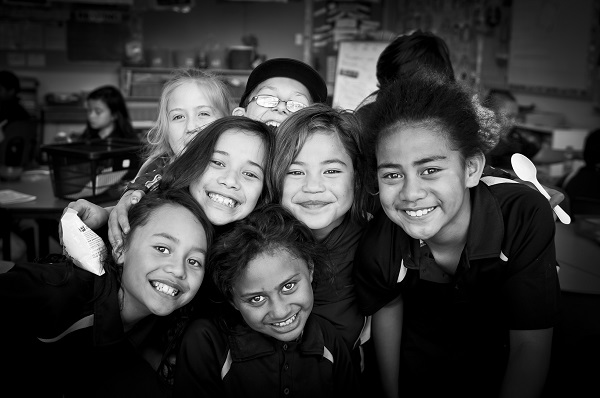Should your school be feeding hungry students?

Poverty and hunger go hand in hand. And with one-third of New Zealand’s children – 300,000 – now living below the official line of poverty, there’s a lot of hunger in our schools.
Hungry kids pose a big problem for schools because they cannot learn efficiently, no matter how hard they try. Like the rest of the body, the brain requires energy to function properly so hungry children are likely to have problems with memory and concentration because they do not have enough energy to carry out these functions.
“Poverty is the single most disruptive condition affecting a child’s education. There is evidence that stress arising from food insecurity affects a child’s ability to focus in class, or attend school at all,”says Dr Prudence Stone, child rights advocate for Unicef New Zealand.
To date, most public discussion of hungry children in New Zealand has placed a strong emphasis on parental inadequacy as being the fundamental reason children go hungry. The Child Poverty Action Group (CPAG) says the evidence suggests otherwise, and irrespective of the cause, children are not responsible for their poverty.
Latest figures reveal that the number of children living in poverty, defined by Unicef as living in households bringing in less than 60 per cent of the median national income – $28,000 a year or $550 a week – rose by 45,000 from last year.
While policy makers argue over who is at fault, it is falling to schools to try to plug the gap. With no funding to feed students, but acutely aware of their moral responsibilities, more schools are turning to charities for help.

Free lunch providers are relatively new in New Zealand, and any that crop up are swamped with requests from schools with hungry students. Eat My Lunch give one lunch to a child in need for every lunch bought by a consumer. In little over a year, the number of lunches donated daily has grown from an initial 100 to 1,215 each day, across 28 schools in Auckland, Hamilton and Wellington. A further eleven schools are on the company’s waiting list.
“The feedback we’ve had from schools receiving our GIVE lunches is incredible,” says Eat My Lunch founder, Lisa King. “It changes the way teachers engage with kids. Time is no longer spent ensuring the kids are fed so they can learn, instead the focus is back on learning.
“We also get feedback on the children’s behaviour and concentration in class – they are able to focus and participate, whereas when they were hungry, they would be disruptive. There has also been positive feedback on the children’s health, in particular their skin is much better.”
Absenteeism because parents have no food to send with kids has also dropped significantly in some Eat My Lunch schools.

It’s a similar story at Feed the Need, a charity which distributed 72,000 lunches to students at seven decile one schools in South Auckland during the winter.
“Funding is limited so we focus our efforts on hot lunches during the coldest time of the year when children’s health is most vulnerable,” says program director Laurie Wharemate-Keung. She knows all too well the hardship of going without food. “My father and mother worked hard to meet the needs of our family of ten, but often times money was short. I distinctly remember the familiar feeling of an empty stomach, the embarrassment of having little or no lunch at school and the stress of trying to ‘cover up’ this fact by making excuses for why I ‘forgot’ my lunch or explaining that I simply wasn’t hungry.”
It’s a scenario played out in schools up and down the country, and it’s no longer limited to the lowest decile schools. A teacher from a decile six intermediate told School News that she provides one of her students with food every day, not just for lunch but to take home to share with his sibling, “else they’d have nothing”. “I give him whatever food we have in class, for example, leftovers from shared lunches to take home as well as boxes of Weetbix, porridge, longlife milk, fruit and leftover sandwiches to eat at home.”
Along the corridor, her colleague keeps a koha basket in the classroom. “This is where students can put any lunch they don’t want. They can swap it or just leave it for someone else to take.”
She estimates that about 50 pupils at the school regularly arrive without lunch, and often gives away her own to a hungry student.
According to CPAG, schools in New Zealand have been stepping in to feed hungry students since the 1990s, but things really ramped up in the mid-2000s. To gain understanding of what was driving schools to provide food, in 2010, CPAG conducted a phone survey of 17 decile one and two primary, intermediate and secondary schools in the Auckland region. The results were published in their report, Hunger for Learning.
“Schools talked about parents facing multiple stresses, with most trying to do their best under what were often difficult circumstances. Issues highlighted were parents working long hours and/or multiple jobs, low incomes, lack of access to transport, and issues around housing including overcrowding and transience. Schools also talked about a minority of parents failing to cope with the multiple stresses in their lives, up to and including feeding their children.
“The tension for schools is whether to usurp parental responsibility by stepping in and feeding their children or to make sure the children have eaten sufficient good quality food to learn. On balance most schools opt for the latter, and often provide some social services for families as well.”

At KidsCan, a charity supplying breakfast and lunch items to more than 20,000 children a week, the work now includes helping schools become sustainable. Last year they started working with schools to plant orchards in order to reduce dependency on lunch programs and give students access to fresh fruit. So far, 28 orchards have been planted in decile three and four schools, as decile one and two schools receive fruit through a Ministry of Health initiative.
“No child should go hungry, especially not in our own backyard in a developed country like New Zealand, says KidsCan CEO and co-founder, Julie Chapman. “Lack of food impacts children’s ability to get to school in a position to learn – to attend, concentrate, and get a good education. We believe that education equals opportunity, and every child should have a fair start in life.”









